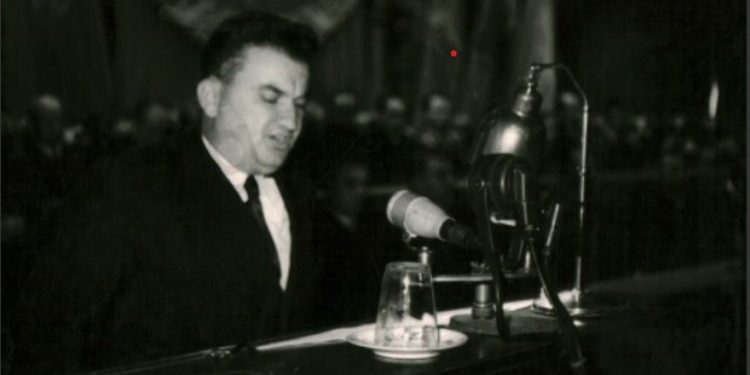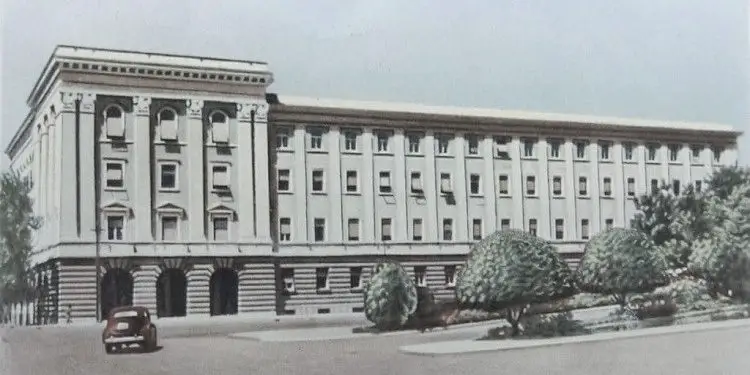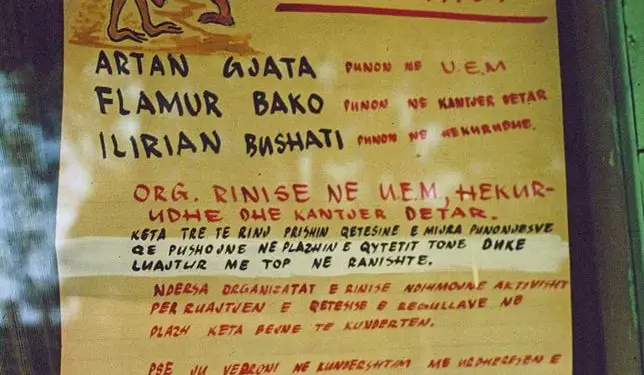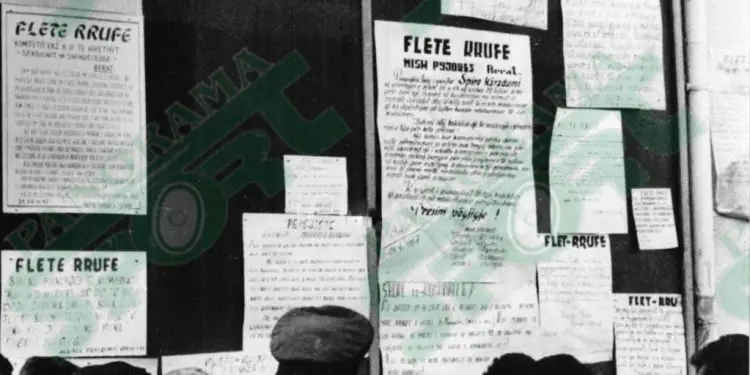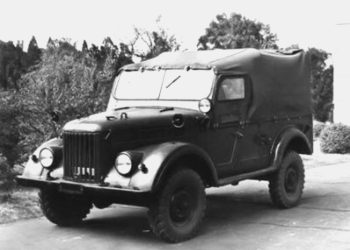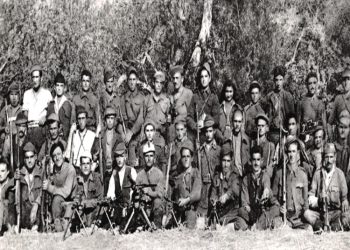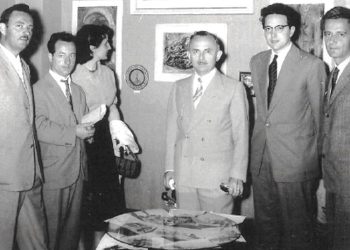By Armand Jonuzi
Memorie.al / The most widespread fashion in Albania in the 70s was the placement of lightning bolts. If a person or a group of people thought that an action or vice of yours was wrong, then he or they should tear off a sheet of lightning and place it right in the center of the city, or the workplace, so that everyone would know. . For Ilia Plaku, an instructor at the Central Council of Professional Unions of Albania at that time, the fashion for lightning bolts came out after a speech by Enver Hoxha in 1967. In an exclusive interview, Ilia Plaku shows how lightning bolts work in that time, as well as the lightning sheet he made, for a work colleague.
Mr. Plaku, how did the idea of lightning sheets come about?
In 1967, Enver Hoxha, during one of his speeches, threw the idea of lightning talks. Immediately after Enver’s speech, his idea began to be implemented. Sheet-lightning, occupied all emulation stands or different signs, in every institution, factory, factory, so, in short, in every enterprise or neighborhood.
I remember that in the center of Tirana, where there were signs showing the advertisements of the films that were shown in the cinemas of the capital, they were full of sheets of lightning and they hit different people.
How do lightning bolts work, who could make them and who were they addressed to?
Lightning talk could be done by just one person or a group of people. They could be done to anyone, for the mistakes he made or for his vices. A letter of lightning, for example, could be made by the worker, the director, if he saw that something was wrong or vice versa.
So, in short, lightning sheets served to point out to a person the mistakes he had made and he had to correct them. Many people were criticized and beaten for the way they dressed, or the way they wore their hair.
How did the person react, who was made a sheet-lightning?
The person to whom the letter was addressed had the moral right to respond to it. He was generally self-criticizing, or justifying his own mistakes. But there were times when an individual, who had been given a sheet of lightning, did not respond to it, then he would be faced with more severe sheets of lightning, for his indifferent attitude, until he responded.
How about you yourself, have you made any lightning sheets?
Yes, I’ve done a lot of sheet lightning too. But one, which I remember well, was addressed to a colleague of mine. I was then working in the Central Committee of Professional Unions of Albania. Our task was to check the organizations of the Professional Unions (today they are called Trade Unions) in every corner of the country, for the progress of every problem of the workers.
During my work as an instructor in the Professional Unions, I noticed that the newspaper “Puna”, which was our organ, was given to writers for free. Then the idea came to me, why should it be given to them for free, when their well-being was known. I asked a colleague of mine, who had been one of those people who had made that decision.
He told me that this was done so that the writers could get to know the life of the working class more closely. This did not convince me and I told him that; writers had to know the life of workers; not from the newspapers, but to see him on the work front. Since I did not agree with my colleague, then together with five other friends who supported my opinion, we decided to make a lightning sheet.
After we drew up the lightning sheet, we placed it on the sign that was in the middle of the building where our offices were located, where today the headquarters of the Parliament is located. The place where we had placed the lightning sheet was a point where anyone passing by could not fail to notice it. We waited a few days for our colleague to get back to us, but she was late.
Only a few days after we had placed the lightning sheet, the head of our department, Gogo Nushi, who at that time was also a member of the Political Bureau of the Central Committee of PPSH, saw it. He stopped, read it and it seemed right, then asked why the lightning sheet had not been answered and then went into his office. It only took a few moments and our colleague obliged and placed on the corresponding table the answer to the lightning sheet that we had addressed to him.
How long did it take to install the sheet lightning?
Lightning sheets were around until the late 80s, but they weren’t what they used to be. This happened after sometime in 1970, Mehmet Shehu, seeing the big blow that had erupted, reacted in a meeting of the Political Bureau, with the idea that the lightning sheets should not degenerate, as all the leaders in the enterprises were being criticized a lot.
This, since lightning sheets were sometimes used for certain interests and were often slander. From that time, the momentum of the lightning sheets decreased and they were very few.
Resume
Name: Ilia
Surname: Plaku
Place of birth: Hoçisht, Devoll
Residence: Tirana
Education: Faculty of Law, Tirana
Work experience:
Instructor at the Central Council of Professional Unions of Albania
Enver Hoxha’s speech and the birth of lightning sheets
On February 6, 1967, Enver Hoxha gave an important speech. This is known as the birth date of the Lightning Leaf movement. Its motto was Enver Hoxha’s call, or order: “Whoever, in a loud voice and in large letters, should write what he thinks about work and about people.” After that, the sheet-lightning spread rapidly, as a new element in the “wall press”.
This found a wide echo and turned into a powerful fighting tool on the side of the workers, to whip every flaw and weakness that prevented the revolutionization of the whole life of the country. Criticisms, debates and public confrontations gave unprecedented momentum to the development of democracy and the implementation of the line of measures; they served to strike the old and to assert and spread the new, the new socialist norms and customs, raised to a high level the struggle against bureaucratism, officialism, prepotence and arrogance.
The leaf-lightning movement, especially in the first year, marked good achievements. Everywhere, in workplaces, in villages, in schools and hospitals, but especially in cities, you can see leaflets displayed, different in content and form, written in large, visible letters, in bold colors, lanes, with dates and deadlines. Stands for sheet-lightning were erected everywhere. They were made by one or more people.
They addressed a person or a group of people. They arose for different problems. In general, they arose for economic, political, social, cultural, ideological, but also personal problems. The subject that was criticized normally responded. Otherwise, the sheet-lightning was repeated several times. Memorie.al




